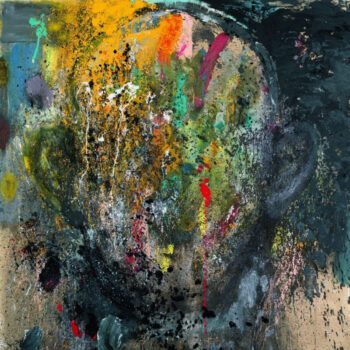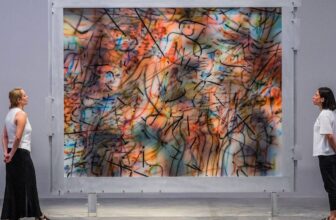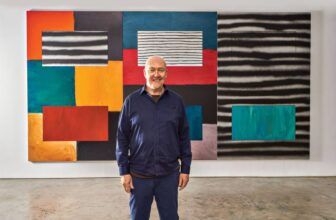What Is Jim Dine Known For
In the kaleidoscope of 20th-century modern art, few artists have left as vivid and emotionally charged a mark as Jim Dine. With a career spanning over six decades, Dine has emerged as a multifaceted creator, equally prolific as a painter, sculptor, printmaker, and poet. Though often associated with the Pop Art movement of the 1960s, Dine has consistently defied classification, pouring personal narrative, psychological depth, and technical mastery into each piece.
His imagery, hearts, robes, tools, skulls, and Venus de Milo, have become enduring motifs. They are symbols not just of aesthetic obsession but of a deep introspection that reflects the human experience in all its contradictions: vulnerability and strength, loss and creation, isolation and connection. This is the story of Jim Dine, his paintings, and the profound language they speak.
At first glance, Jim Dine’s recurring images might seem deceptively simple. A red heart, a carpenter’s tool, a bathrobe, these are the kinds of objects we pass by every day. But under Dine’s brush, these objects are reborn with emotional weight. The heart, for example, is not just a romantic symbol; it is a metaphor for the artist himself, a pulse of longing, affection, pain, and joy.
Though he rose to fame during the 1960s alongside Roy Lichtenstein, Andy Warhol, and Claes Oldenburg, Jim Dine was never fully aligned with Pop Art’s consumerist commentary. Instead, he used everyday imagery as a way to explore personal identity and memory. For Dine, a tool was not merely a reference to manual labor or masculine strength; it was also a connection to his grandfather’s hardware store, a deep symbol of familial ties and working-class roots.
Above all, Dine is known for his emotional honesty and symbolic visual language. His paintings speak directly from the soul, eschewing irony in favor of genuine introspection.
Famous Paintings by Jim Dine
Over the years, Dine has created thousands of works across multiple media, but several paintings have stood out as defining examples of his style:
1. “Four Hearts” (1969)
One of Dine’s most recognizable motifs, the heart, takes center stage in this vibrant, colorful painting. The hearts are not perfect or symmetrical; they bleed color, almost pulsing with emotion. This work captures Dine’s ability to blend abstraction with symbolism in a deeply moving way.
2. “Tool Box” Series (1966)
In this series, Dine elevates tools, wrenches, hammers, pliers, to a near-sacred status. Painted in almost reverent detail, these works are an homage to his upbringing and connection to craftsmanship.
3. “Bathrobe” (1964)
Perhaps his most enigmatic series, the bathrobe paintings are interpreted as self-portraits, depictions of presence through absence. There is no body, only the robe, standing like a ghostly figure on the canvas. They ask, “Who are we when no one is looking?”
4. “Venus in Blue Jeans” (1963)
Here, Dine merges classical art with pop culture, painting the Venus de Milo in denim, bridging the old world and the new. This work typifies his resistance to staying within a single genre or style.
5. “The Glyptotek Drawings” (1987–88)
While not a painting series per se, these works reflect his deep engagement with classical sculpture. He reinterprets ancient forms through a modern lens, layering them with color, texture, and expressive force.
How Does Jim Dine Make His Paintings?
Jim Dine’s process is as expressive as the final work itself. He is known for being deeply gestural and physical in his approach, often using his entire body to interact with the canvas. His methods have evolved over time, but key characteristics remain:
1. Mixed Media Layers
Dine frequently combines acrylics, oils, charcoal, pastel, and collage. This layering creates textured surfaces that seem to breathe with emotion. He often reworks a canvas multiple times, allowing the history of the painting to remain visible.
2. Drawing Meets Painting
He doesn’t draw a sharp distinction between drawing and painting. He’ll often sketch directly onto canvas or combine graphic line work with thick, painterly brushstrokes.
3. Symbolic Repetition
Motifs such as hearts, skulls, tools, and robes reappear again and again. Each iteration is different, with new colors, strokes, and emotional undertones. For Dine, repetition is not redundancy, it’s revelation.
4. Physical Mark-Making
Dine uses scratching, smudging, scraping, and erasing as ways to add depth and intensity. The final canvas is a palimpsest, a visual diary of his thought process.
5. Printmaking and Assemblage
In addition to painting, Dine is a master printmaker. He has created numerous woodcuts, etchings, and lithographs. He also creates assemblages, combining physical objects with painting to create hybrid works.
What Materials Does Jim Dine Use?
Jim Dine is nothing if not versatile. Over his long career, he has used a wide array of materials:
Oil paint
Acrylics
Charcoal and graphite
Pastels and colored pencils
Wood, metal, and found objects (especially in his sculptural and assemblage work)
Etching tools and printing inks (for his printmaking)
Canvas, paper, and fabric surfaces
Dine often combines these materials in unconventional ways, using the texture and physicality of the medium to convey emotion. The choice of material is never arbitrary, it becomes part of the painting’s language.
What Art Style Is Jim Dine Associated With?
While often lumped into the Pop Art category due to his use of everyday objects, Jim Dine defies easy classification. His work is best understood as a fusion of multiple styles, including:
Neo-Dada: With roots in performance and object-based art, similar to Robert Rauschenberg and Jasper Johns.
Expressionism: Especially in his later work, which is emotionally raw and gesturally intense.
Conceptual Art: Due to his ongoing investigation of identity, memory, and symbolism.
Modern Romanticism: Dine injects a poetic, introspective tone into his work that separates him from Pop Art’s satire.
If there is a single unifying thread, it is his emphasis on the self as subject, a vulnerable, searching, emotional self rendered in paint and line.
How Many Paintings Does Jim Dine Have?
It’s difficult to give a precise number, but Jim Dine has created thousands of works. His output includes:
Paintings (both small- and large-scale)
Drawings
Etchings, lithographs, and woodcuts
Sculptures
Books and poetry
As of 2025, art catalogues and institutions estimate his body of work includes well over 3,000 paintings and drawings, hundreds of prints, and dozens of sculptures. His productivity is legendary, and even into his 80s, Dine remains prolific.
How Much Do Jim Dine Paintings Cost?
Jim Dine’s paintings can vary widely in price depending on size, medium, and period. As of recent auctions and gallery sales:
Original paintings typically sell for $50,000 to $500,000+.
Large-scale or iconic pieces (especially those with hearts or Venus figures) have fetched over $1 million.
Prints and limited editions range from $2,000 to $25,000, depending on rarity and condition.
Sculptures and assemblage works often fall in the $100,000 to $300,000 range.
His auction record was set by The Red March Forward (1965), which sold for $1.3 million at Sotheby’s.
Collectors value Dine’s work not just for its visual appeal but for its emotional resonance and art historical importance.
Where Are Jim Dine’s Paintings Located?
Jim Dine’s works are housed in some of the most prestigious art institutions around the world. Major collections include:
United States:
The Museum of Modern Art (MoMA) – New York
The Whitney Museum of American Art – New York
The Art Institute of Chicago
San Francisco Museum of Modern Art (SFMOMA)
The National Gallery of Art – Washington, D.C.
Walker Art Center – Minneapolis
Europe:
Tate Modern – London
Centre Pompidou – Paris
Glyptotek Museum – Copenhagen (especially known for housing his “Venus” works)
Berlin State Museums
Private Collections:
His work is also highly sought-after by private collectors and appears in numerous private and corporate collections across the globe.
Jim Dine’s Legacy and Final Thoughts
Jim Dine’s paintings are not about commercial gloss or intellectual puzzles. They are about what it feels like to be human, to love, to lose, to remember, to forget, to hope, and to create. His art is an open journal, with every brushstroke revealing something raw, intimate, and unmistakably authentic.
In a world where trends shift at dizzying speeds, Dine’s work stands as a testament to consistency of vision and depth of feeling. Whether it’s a single red heart bleeding into the canvas or a detailed depiction of a wrench, Dine teaches us that the most ordinary objects can carry the most extraordinary emotions.
As he once said:
“I use objects that are around me as a vocabulary. And then I can manipulate them, just like I manipulate language, to say what I need to say.”
And say it, he does, with brilliance, bravery, and the beating heart of a true artist. image/richardgraygallery.com




